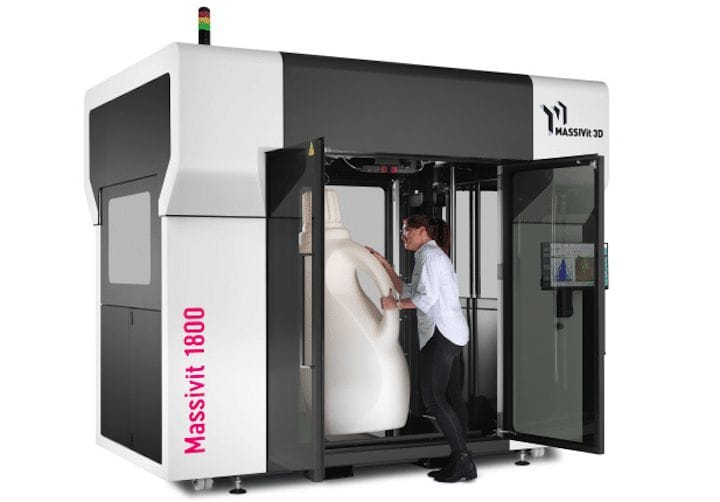![The Massivit 1800 large format 3D printer [Source: Massivit]](https://fabbaloo.com/wp-content/uploads/2020/05/image-asset_img_5eb0a0a981238.jpg)
I’m reading a press release from Massivit describing a notable machine sale, and had a thought about choosing 3D printers.
Massivit produces an unusual niche 3D printer that can quickly produce very large objects that are not strong enough for structural use – but they are very suitable for large signage installations, giant lettering, sculptures, props and other non-mechanically stressed items.
In their announcement, Israel-based Massivit tells how New Zealand-based Weta Workshop, a design studio responsible for their work on many famous blockbuster movies, has acquired a Massivit 1800 3D printer. The company intends on using the machine to produce enormous sculptures for use in future film projects.
As you might imagine, Weta Workshop is called upon to produce highly unusual sculptures with complex geometries at large scales. They apparently have been relying on a combination of traditional subtractive technologies and some 3D printing to achieve their results thus far. However, Pietro Marson, Workshop Operations Analyst at Weta Workshop, explains:
“We’re often required to create 8- or 9-meter-tall (26.2 or 29.5-foot) sculptures and mannequins, which means we need to print multiple parts and then manually fit them together. Needless to say, this is both time-consuming and expensive.
The largest commercially available SLA 3D printer in the country has a maximum print volume of 60 x 60 x 40 centimeters, whereas the Massivit 1800 allows us to print up to 1.8-meter-high [5.9-foot] components. We can also print much more quickly and with far greater geometry freedom than with CNC machining.”
Aha – they have recognized that the Massivit tool can provide a better experience for their workflow, and it sounds like they will be quite successful.
This triggers my axiom that 3D printers are simply tools in the workshop, and that you should always choose the right tool for the job. In fact, there are many kinds of 3D printers, each with different properties. A thoughtful workshop might include several 3D printers employing different processes so that a range of capabilities would be present.
Choose the right tool for the job. Is that what Weta Workshop did here? Yes and no. They chose the right tool for the job, but actually they chose a BETTER tool for the job. This is my realization: all 3D printers are transitory and could eventually be supplanted by a better machine.
What persists is the making workflow, which can be continually improved by choosing better machines. In this case Weta Workshop dramatically improved their workflow, but is that the end of the process?
No, it is not. What happens if next year there is a machine that provides an even larger build volume? Weta Workshop might be advised to switch to that better machine, moving their workflow forward a few more notches.
The bottom line here is that there really is no “right” tool for the job; instead at every moment there is a “best” tool for the job. And that will change in the next moment.
As always, choose wisely.
Via Massivit











Modix has upgraded their line of large-format 3D printers to what they call “version 3”. But that version actually includes a huge list of powerful improvements.